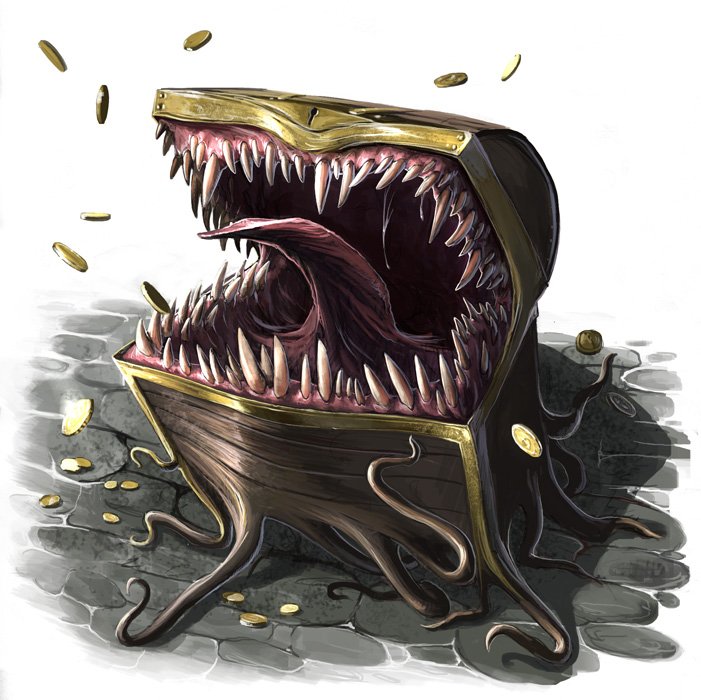Dungeoneering Basics - Mimic
While there are many monsters that inhabit the dungeons and depths of the fantastical world of Dungeons and Dragons, one of the most iconic and deadly is the Mimic. This living, breathing treasure chest is a horrifying beast which seeks to devour any foolish enough to draw close. Used too often, and the players become too wary, but if used occasionally, they can have great effect.
While the most recent edition of Dungeons and Dragons has changed them to monstrosities, Mimics will always be aberrations to me; eldritch beings that alter their shape to that of a desired object, most typically a treasure chest. When the greedy adventurer saunters up to the chest for a quick reward, sticky pseudopods erupt out of it, and it attempts to devour the would-be hero. There's something incredibly alien about a being that knows you like treasure, and so it changes it's shape to that of an object which holds what you adore.
With it's aversion to bright light, all but the most powerful of Mimics tend to stay out of the sunlight and stay deep underground, and will even occasionally transform into things that aren't treasure chests, like doorways or even furniture. In older editions of the game, there were even smaller types of Mimics which could speak different languages, and could even be bargained with for food.
When adding Mimics to your D&D adventure, it's important to keep in mind that players like to be rewarded for their actions, and so a Mimic is almost the exact opposite of that. When a player sees a treasure chest, they tend to get excited, and so after you instead punish the player, they'll become leery of chests and other rewards, which might in turn bog the game down. That of course is only if the player is perpetually being punished for their desire to be rewarded, if it's instead used sparingly, then they can be used to great effect when adding suspense.
Mimics are an incredibly iconic monster to Dungeons and Dragons, and while I don't utilize them very often, I try to use them with great effect. Aside from the Mimics we discussed so far, it's also been said that there are other types, which are rumored to grow even larger than a regular Mimic. If an average sized Mimic can disguise itself to look like a treasure chest, what could a larger one duplicate?

